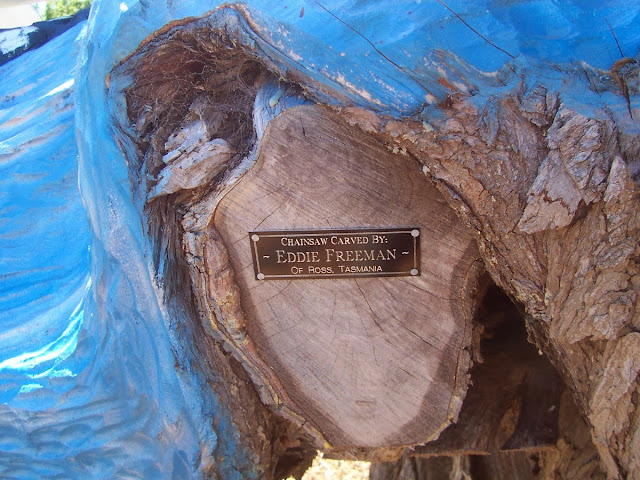I can't help but smile whenever I am in this beautiful village because I need do nothing more than to walk/drive around taking in the architecture and the atmosphere to feel fully satisfied.
To add some depth and colour to your visit, you can pick up a Heritage Walk booklet (available from the Evandale Tourist Information Centre and spend half a day walking around this magnificent heritage listed village, or visit on a Sunday and include a couple of hours at the large weekly markets.
Throw in a meal or two at any of the local eateries, or a picnic lunch in one of the pleasant parks and you have a fulfilling day done.
The Tourist Information Centre is at 18 High Street, Evandale
Along with its history and preserved architectural beauty, Evandale is also known for its long-running Sunday market and as host to the annual World Penny Farthing bicycle Championships - held annually in February.
There is a primary school, churches, parks, pubs, shops and a fire station, cafés and antique shops - nearby locations include Nile, Deddington and Perth.
Evandale has been a centre of agriculture and pastoral activity since 1820, when grazing licences and location orders were replaced by firmer land titles.
The area consists of the central plain of the South Esk Valley and tributaries, skirted by the foothills and mountains of Ben Lomond Range.
These uplands have yielded considerable timber resources and the municipality is noted for the production of wool, fat lambs, sheep, cattle, dairy products, peas, barley, wheat and oats.
 |
| Evandale Markets |
Caravans and motor homes may stay free overnight (with council permit), but must vacate every Saturday to allow set up for the Sunday Market.
Black and grey water to be contained.
You must obtain a permit to stay overnight.
Permits are FREE for up to 48 hours and are available 24/7 via a form on the https://www.northernmidlands.tas.gov.au/community/facilities/rv-friendly-towns#camping-permits website, with your permit number emailed to you immediately.
Tourist Information Centre
18 High Street, Evandale 7212 - Ph: 61 3 6391 8128
RV Effluent Dump Point
Morven Park, Barclay St, Evandale
Located behind main building at rear of sports oval. Difficult access for big rigs
Emergencies
Police, ambulance and fire dial 000
Toilet Facilities
Russell Street, Evandale - Open 8:00 am to 6:00 pm
Doctor/Medical Centre
Norfolk Plains Medical Pty Ltd, 73 Main Rd, Perth - ph. (03) 6398 2295
Police Station
3-5 Scone Street, Evandale - non-emergency ph. 131444
The town has a population of around 1,100 (2011 census)
It was also known as Morven before being named Evansdale (1829) and finally Evandale in 1836 after the surveyor and painter George William Evans, who spent much of his later life in Van Diemen's Land.
John Batman, the founder of Melbourne, and landscape painter John Glover lived near the town with Glover memorialised in an annual art prize and a statue at Falls Park, while John Kelly, father of the bushranger Ned Kelly, once worked in the township as a convict.
A Scottish mariner, Captain Andrew Barclay, was granted 500 acres (202 ha) of land on the South Esk River in 1816, and another 300 acres (121 ha) the next year when he built 'Trafalgar' - the earliest surviving building in Evandale and one of the oldest farmhouses in Australia.
Barclay continued acquiring land in the surrounding district and by 1828 was considered the largest owner of good land on the island








































